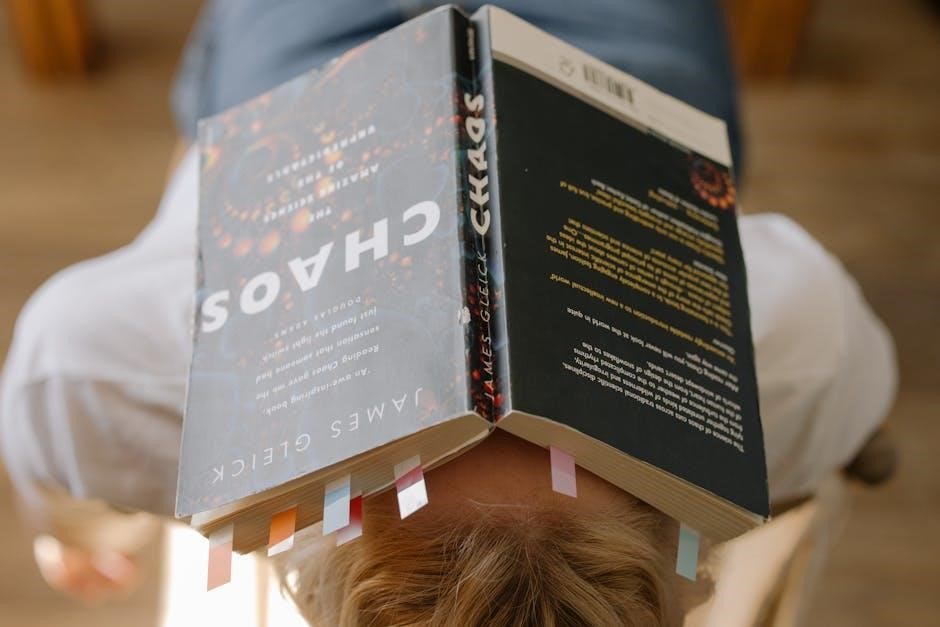Overview of “Alexander and the Terrible, Horrible, No Good, Very Bad Day”
Judith Viorst’s book, illustrated by Ray Cruz, showcases Alexander’s day where everything goes wrong, starting with gum in his hair. It explores a child’s perspective when facing continuous setbacks. The book is available as a PDF, offering accessible storytelling for children and families seeking relatable narratives.

Plot Summary
The narrative begins with Alexander waking up to a truly awful start – finding gum stuck in his hair, immediately setting the tone for what’s to come. His day quickly spirals downhill as he faces a series of unfortunate events, both at home and at school.
At breakfast, his brothers find prizes in their cereal boxes, while he gets nothing. In the carpool, he’s stuck in the middle seat. School proves no better; his teacher criticizes his artwork and singing, and his best friend decides he’s no longer the best. Lunch is equally disastrous, with an unappetizing meal and further social setbacks.
The afternoon brings more woes, including a trip to the dentist where he’s the only one with a cavity. Even his mother’s attempts to console him seem to backfire. Throughout the day, Alexander loudly voices his frustration and even contemplates moving to Australia to escape his misery. The story culminates with Alexander realizing that everyone, even in Australia, experiences bad days sometimes, offering a glimmer of acceptance.

Character Analysis: Alexander
Alexander is portrayed as an ordinary boy who is experiencing an extraordinarily bad day, making him incredibly relatable to young readers. He embodies the typical frustrations and disappointments that children often encounter, but magnifies them to an almost comical degree. Initially, Alexander is presented as someone easily overwhelmed by setbacks.
His reactions to the day’s mishaps reveal a character prone to exaggeration and a bit of self-pity. From the gum in his hair to the cavity at the dentist, each event fuels his growing sense of injustice. Despite his negativity, Alexander’s character is sympathetic. His desire to escape to Australia reflects his wish to avoid further misfortune.
Ultimately, he demonstrates a capacity for understanding that bad days are universal. This realization, though simple, shows growth. Alexander’s character is a vehicle for exploring childhood emotions and coping mechanisms in the face of adversity, making him a central and engaging figure.
Themes Explored in the Book
The book explores themes of childhood frustrations and the universality of bad days. It also touches on coping mechanisms, empathy, and understanding that everyone experiences setbacks. Alexander’s journey highlights managing emotions when things go wrong.
Dealing with Bad Days
Alexander and the Terrible, Horrible, No Good, Very Bad Day provides a poignant exploration of how children navigate difficult and frustrating experiences. The story serves as a mirror, reflecting the reality that everyone, regardless of age, encounters days where everything seems to go wrong.
Alexander’s relentless string of unfortunate events, from waking up with gum in his hair to facing criticism at school, offers a canvas for discussing coping mechanisms. The narrative acknowledges the validity of feeling upset and overwhelmed when confronted with a series of negative experiences.
The book implicitly encourages young readers to recognize that bad days are temporary and universal. It presents an opportunity to discuss healthy ways to process negative emotions, such as talking about feelings, seeking comfort from loved ones, or finding constructive outlets for frustration.
Moreover, the story subtly introduces the idea that even amidst personal struggles, others may be facing their own challenges, fostering empathy and a broader perspective on life’s inevitable ups and downs. Ultimately, it normalizes the experience of having a bad day.
Empathy and Understanding
Judith Viorst’s narrative extends beyond Alexander’s individual misfortune, subtly encouraging empathy and understanding towards others. While the story primarily focuses on Alexander’s experience, it implicitly highlights the idea that everyone, including family and friends, may be grappling with their own difficulties.
By showcasing Alexander’s frustrations, the book creates an opportunity to discuss recognizing and acknowledging the emotions of those around us. It prompts young readers to consider that outward appearances may not always reflect inner feelings and that offering support and compassion can make a significant difference.
Furthermore, the story subtly encourages children to move beyond a self-centered perspective and recognize the interconnectedness of human experiences. It fosters the understanding that extending kindness and consideration to others, even when preoccupied with personal challenges, can create a more supportive and compassionate environment.
Ultimately, Alexander and the Terrible, Horrible, No Good, Very Bad Day subtly promotes empathy as a valuable trait, emphasizing the importance of recognizing and responding to the emotions of those around us, fostering a sense of community and shared humanity, despite daily struggles.

Literary Devices Used
Viorst employs hyperbole to amplify Alexander’s misfortunes, creating humor while highlighting the exaggerated nature of a bad day. Repetition of “terrible, horrible, no good, very bad” emphasizes Alexander’s overwhelming feelings, enhancing the story’s relatability.
Humor and Exaggeration
Judith Viorst masterfully employs humor and exaggeration to capture the essence of childhood frustrations in “Alexander and the Terrible, Horrible, No Good, Very Bad Day.” Alexander’s day, filled with escalating mishaps from gum in his hair to discovering a cavity, becomes a comical cascade of unfortunate events. The exaggeration of each incident allows readers, especially children, to find humor in everyday disappointments.
The story’s humor arises from the relatability of Alexander’s experiences, amplified to an absurd degree. His complaints, though seemingly trivial, resonate with children who have faced similar, albeit less dramatic, situations. The narrative’s lighthearted tone prevents the story from becoming overly negative, instead offering a cathartic release through laughter.
Viorst uses exaggeration to emphasize Alexander’s feelings, making his emotions accessible and understandable. By amplifying the small annoyances of daily life, she creates a humorous lens through which readers can process their own bad days, finding comfort in the shared experience of imperfection.
Reception and Awards
“Alexander and the Terrible, Horrible, No Good, Very Bad Day” has garnered significant recognition and acclaim since its publication, solidifying its place as a beloved children’s classic. The book’s relatable themes and humorous portrayal of a bad day have resonated with readers of all ages, contributing to its enduring popularity and critical success.
Among its accolades, the book was named an ALA Notable Children’s Book in 1972, a testament to its literary merit and its contribution to children’s literature. Furthermore, it received the George G. Stone Center Recognition of Merit and the Georgia Children’s Book Award, highlighting its positive impact on young readers. Its selection as a Reading Rainbow book further amplified its reach and influence.
The book’s widespread acclaim reflects its ability to connect with children on an emotional level, offering a comforting and humorous perspective on everyday challenges. Its awards and recognition underscore its significance in children’s literature and its lasting impact on generations of readers.

Adaptations: Film and Other Media
Judith Viorst’s cherished book, “Alexander and the Terrible, Horrible, No Good, Very Bad Day,” has transcended its literary origins to captivate audiences through various adaptations in film and other media; Notably, Walt Disney Pictures brought Alexander’s tumultuous day to life in a 2014 film, co-produced by Shawn Levy and Lisa Henson.
This live-action adaptation featured Ed Oxenbould as Alexander, portraying his experiences with humor and relatability. The film expanded upon the book’s narrative, depicting not only Alexander’s misfortunes but also the challenges faced by his entire family. It resonated with audiences, offering a lighthearted and entertaining take on the universal experience of having a bad day.
Beyond the feature film, the story has found its way into other media, including stage productions and audiobooks, further extending its reach and allowing audiences to engage with Alexander’s story in diverse formats. These adaptations demonstrate the enduring appeal and adaptability of Viorst’s work, ensuring its continued relevance for generations to come.
Educational Applications and Activities
“Alexander and the Terrible, Horrible, No Good, Very Bad Day” is a treasure trove for educators, offering numerous opportunities for engaging activities across various subjects. Teachers utilize the book to explore themes of empathy, resilience, and emotional regulation, helping students understand and manage their own difficult days. Classroom discussions often revolve around identifying with Alexander’s experiences and brainstorming coping strategies.
Reading comprehension exercises can focus on identifying cause-and-effect relationships within the story, examining Alexander’s reactions to different events. Language arts activities might involve vocabulary building, exploring the meaning of descriptive words like “terrible” and “horrible.” Creative writing prompts can encourage students to write about their own bad days, fostering self-expression and reflection.
The book also lends itself to activities in other subjects. Math lessons could incorporate counting the number of unfortunate events Alexander encounters. Art projects can involve illustrating scenes from the story or creating visual representations of emotions. Ultimately, the book serves as a springboard for interdisciplinary learning, making education both engaging and relevant.